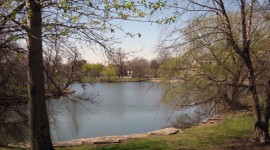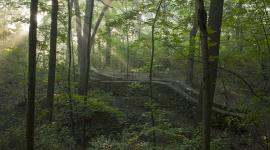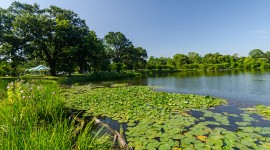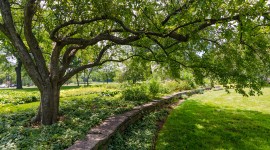The Obama Foundation Gets a Serious Reality Check
On Monday, July 29, 2019, the City of Chicago released a draft Assessment of Effects to Historic Properties (AOE) as part of the ongoing federal reviews of plans to build the Obama Presidential Center (OPC) in Chicago’s Jackson Park. Listed in the National Register of Historic Places in 1972, the park was thrice designed by Frederick Law Olmsted, Sr., the “father of American landscape architecture.”
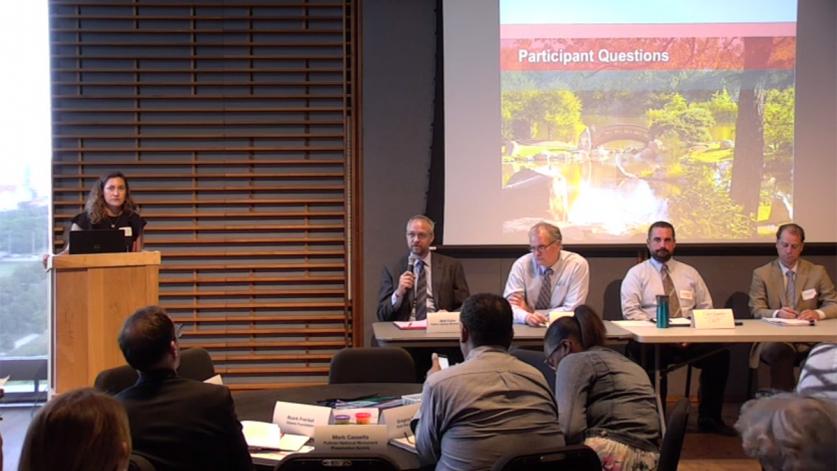
Federal agencies routinely rely on applicants and contractors to prepare documentation, and, accordingly, the AOE was prepared and endorsed by the City of Chicago—hardly an opposition group. It contains the most consequential revelations yet to come from the federal review process. Written in plain, measured English, the report concludes that were the OPC built as planned, it would significantly diminish the integrity of the Olmsted-designed landscape, in particular “the historic property’s integrity of design, materials, workmanship, and feeling” (i.e., four of the seven criteria of historic integrity). And because it necessitates the relocation of recreational activities to the adjacent Midway Plaisance, the OPC would also “modify the historic character” and alter aspects of the “design, setting, and feeling” of that park, too, which is also listed in the National Register.
The report’s findings were predictable. In a letter to the City of Chicago dated January 3, 2018, The Cultural Landscape Foundation (TCLF) outlined the significant adverse effects that the OPC would have on the historic, Olmsted-designed park—effects that are now writ large in the AOE. And to be clear, adverse effects, by definition, are not minor impacts on historic properties: they are effects that diminish the “characteristics of a historic property that qualify the property for inclusion in the National Register.”

So far, representatives of the Obama Foundation have publicly shrugged off the findings, telling the Hyde Park Herald shortly after the document’s release that they were “pleased with the report.” Fred Wagner, a Washington, D.C.-based attorney (formerly chief counsel of the U.S. Federal Highway Administration during Obama’s presidency) who is now helping the Obama Foundation navigate the federal reviews, reportedly indicated that the 60-page document was “basically what the foundation expected.” And Michael Strautmanis, the foundation’s chief engagement officer, likewise said the foundation “anticipated the finding of adverse effects.”
But if that is, indeed, the case, then the Foundation must have been less than truthful when it filed its application with the Chicago Plan Commission in January 2018. Submitted to satisfy the Lake Michigan and Chicago Lakefront Protection Ordinance, the application ( #721) asked several questions about the OPC and its impact on the Chicago lakeshore. In Part Two of the document, the foundation described five “guiding principles for the design of the OPC” and proffered that it would “honor the vision of Frederick Law Olmsted.” And in Part Four of the application, the foundation wrote that the proposed development will “respect the cultural, historical and recreational heritage of the lakeshore parks” and create new opportunities “while respecting the historic features and content of Jackson Park.”
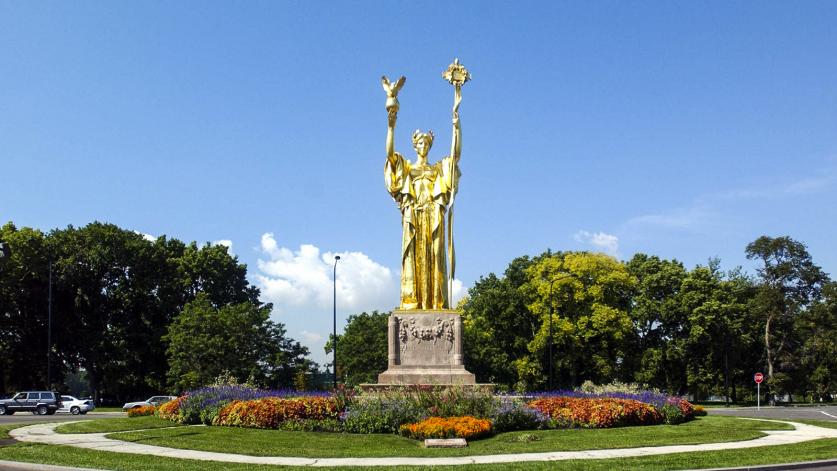
If the Obama Foundation really believed that its planned presidential campus was in harmony with the historic design of Jackson Park, then a comprehensive report produced by the city essentially declaring the opposite would surely come as something of a surprise. And so, one is entitled to ask: Was the Foundation simply paying lip service when it said it wouldn’t harm a nationally significant cultural resource in its original application to the city, or is it now feigning calm in the face of a damning regulatory assessment that may force it to alter its plans?
One suspects that both may be true. During Rahm Emmanuel’s mayoral administration, asking probing questions about the OPC and its impact on the park and surrounding neighborhood was clearly not on the agenda. The imperative then was not to get constructive feedback but was rather to “get on board,” as the mayor was known to say. But now the project is facing the sobering reality of a methodical federal bureaucracy, and Chicago’s new mayor, Lori Lightfoot, seems less tethered to the Obama Foundation than her predecessor. In the Foundation’s new reality, not everything is under control, and the news may get worse still.
Why? One reason is that in outlining the Obama Center’s potential adverse effects, the AOE further determined that “the size and scale of new buildings within the historic district diminish the intended prominence of the Museum of Science and Industry building and alter the overall composition and design intent of balancing park scenery with specific built areas,” and that “new materials with modern functions differ from historic materials at a scale and intent that does not conform to the Secretary of the Interior’s Standards.”
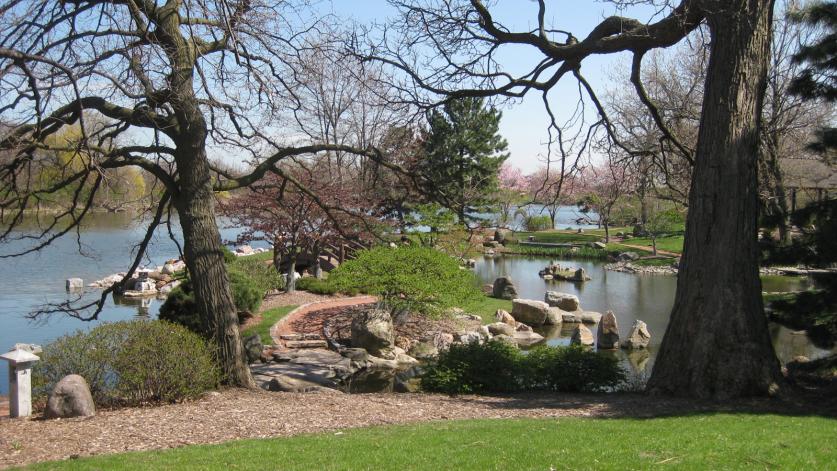
These deliberate references to the size, scale, and materials of the planned presidential campus signal to seasoned participants in Section 106 reviews that the overall design of the OPC is incompatible with the historic design of Jackson Park, and that, therefore, piecemeal gestures simply to mitigate its adverse effects will not be sufficient to satisfy the consulting parties or the provisions of the National Historic Preservation Act, which mandates that measures to avoid and minimize adverse effects also be considered and implemented. To meet those requirements, the Obama Foundation will surely need to go back to the drawing board, and it will ultimately need signatures from the Department of Transportation, the Department of the Interior, and the Advisory Council on Historic Preservation to ratify any final agreement regarding adverse effects.
Despite the grave implications of the AOE and the federally mandated directive to consider avoidance as a remedy to adverse effects, the city has already indicated that it will not entertain another South Side location for the OPC. In a meeting of official consulting parties on August 5, 2019, Abby Monroe, the representative of the city’s Department of Planning and Development who is leading the public-outreach process, stated that “the location [of the OPC] itself is not something that would change.” But the city does not speak for the federal agencies and other consulting parties whose mandate is to protect historic resources.
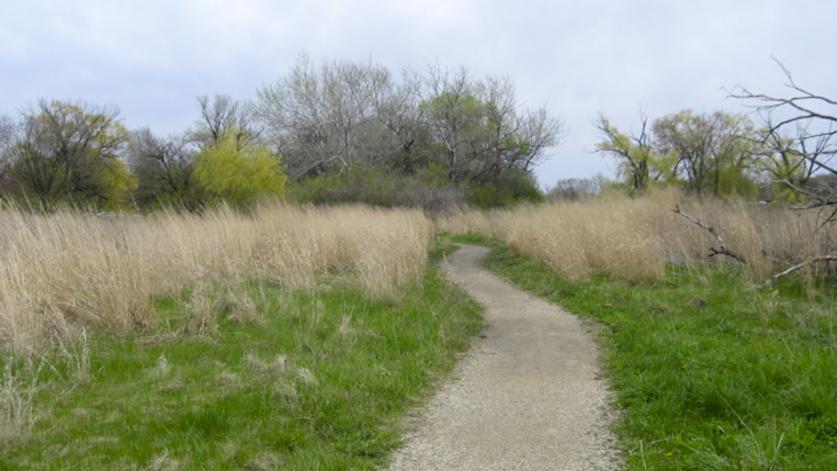
If the recent report were not enough to cause the Obama Foundation to consider another South Side location for its presidential center, then it should carefully weigh the fact that still other federal reviews, under the Department of Transportation Act and the National Environmental Policy Act, have yet to begin in earnest. And meanwhile, Richard Epstein, one of the most-cited legal scholars of the twentieth century, has agreed to lead the case against the OPC in court, pro bono—a case that has now been appreciably strengthened by the findings in the AOE.
But these and other future battles notwithstanding, is it too naïve to hope that the Obama Foundation’s course of action will be dictated by something other than its legal or political prospects? It was disappointing, indeed, that not one reporter asked the Foundation the most obvious question in the wake of the city’s recent report: If, after conducting a serious, unbiased study, professional planners and historians have concluded that building the Obama Presidential Center in Jackson Park would harm two nationally significant, historic parks, why must you still build it there? And having already declared that the location of the OPC will not change, the City of Chicago, too, should be asked an equally fundamental question: If the outcome of the federal review process is preordained, then why have the process at all?




